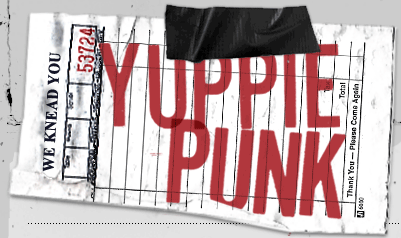Book Review: ‘Grunge Is Dead’

Grunge is dead, though for a time it was the most vital movement rock & roll had ever seen heard. Rarely before had a sound — and a city — been thrust into the spotlight with such ferocity and expectation. The world, it seemed, expected nothing less than a revolution, which it got, of course, before eventually killing off the pomp and hairspray of glam metal and welcoming a new breed of bands to the spotlight from Korn to Green Day. But alas, the movement that sprung from the ashes of punk, metal and the gray skies of Seattle, eventually retreated like that city’s sun every winter, leaving an uneven — and untold — story in it’s wake, leaving the door open for “.”
“The original idea for doing this book,” author — a New Yorker — says in the foreword, “Came about when I was doing a Soundgarden article for Classic Rock magazine back in 2004. While interviewing the group’s early producer, Jack Endino, he mentioned that almost every single article being written about grunge bands nowadays were by writers who were not from the Seattle area yet were giving their “revisionist take” on what happened. Which got me thinking … what if a book was comprised of nothing but quotes from the actual people that experience the movement firsthand, tracing it from its very beginning to its end?”
And that’s the framework for his book — an enlightening chronological history of the Seattle rock scene from the 1960s through the mid-90s, as told by the folks who lived it. Most of the usual suspects are interviewed: band members, Sub Pop founders, writers, DJs, producers. However a few notable folks are missing, namely Chris Cornell, Kris Novoselic and Dave Grohl, three of the biggest rock stars to emerge from the scene. There’s also no one from Sunny Day Real Estate interviewed, a band who bridged the gap between the fall of grunge and the rise of emo. Aside from Nirvana, Soundgarden, Alice in Chains and Pearl Jam, there are plenty of other riches to explore: Mother Love Bone, Mudhoney, The Rocket, Fastbacks, The U-Men, Screaming Trees, Coffin Break and on and on.
As an oral history, the book works well, and does for the Seattle scene what “Please Kill Me” did for 1970s punk. Kudos to Prato for his tireless editing. It’s a big book, and he keeps pace throughout, no doubt a difficult task when drawing from some 130 interviews he conducted over a three year period. In a recent interview with UGO, Prato discussed the process of putting the book together. “It was done through phone interviews. I would speak to some people,” he said, “And at the end of the interview I would ask them to suggest other people I could speak to. One of the biggest helps was Mark Arm, the lead singer of a band called Mudhoney. He was really, really great, supplying me with long lists of people and their email addresses and phone numbers.”
Perhaps only the folk movement of the 1960s and punk rock in the ’70s had a similar impact on pop culture, but the 1980s — and thus far the 2000s — have been devoid of such a revolutionary musical movement (unless you count iTunes and the death of the album). It’s inevitable, however, that there will be a grunge revival. It happened with punk and even new wave, but that won’t change the fact that grunge is dead.
RELATED: ‘Goodbye 20th Century’ By the Numbers | Organic Anti-Beat Box Man






